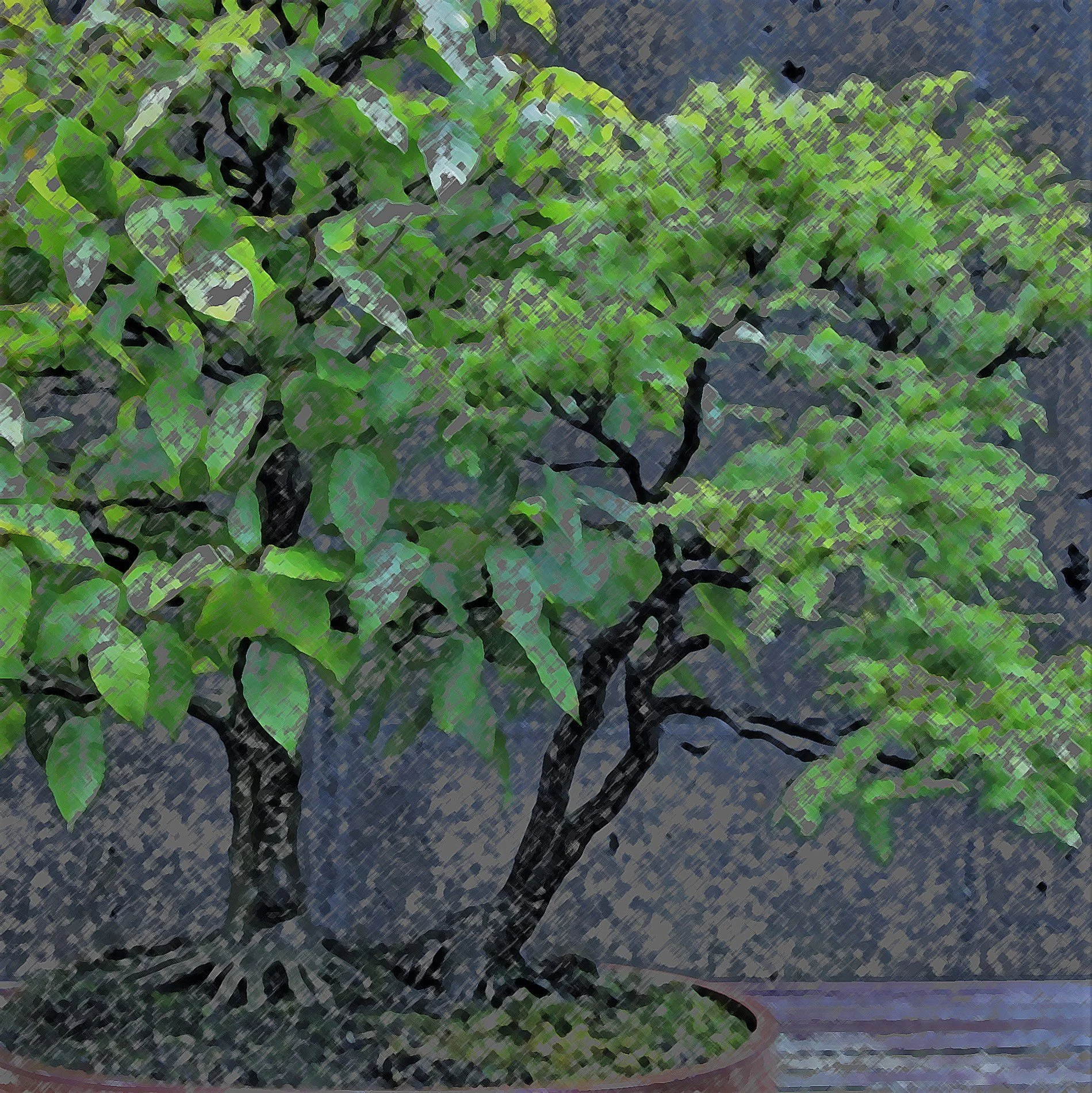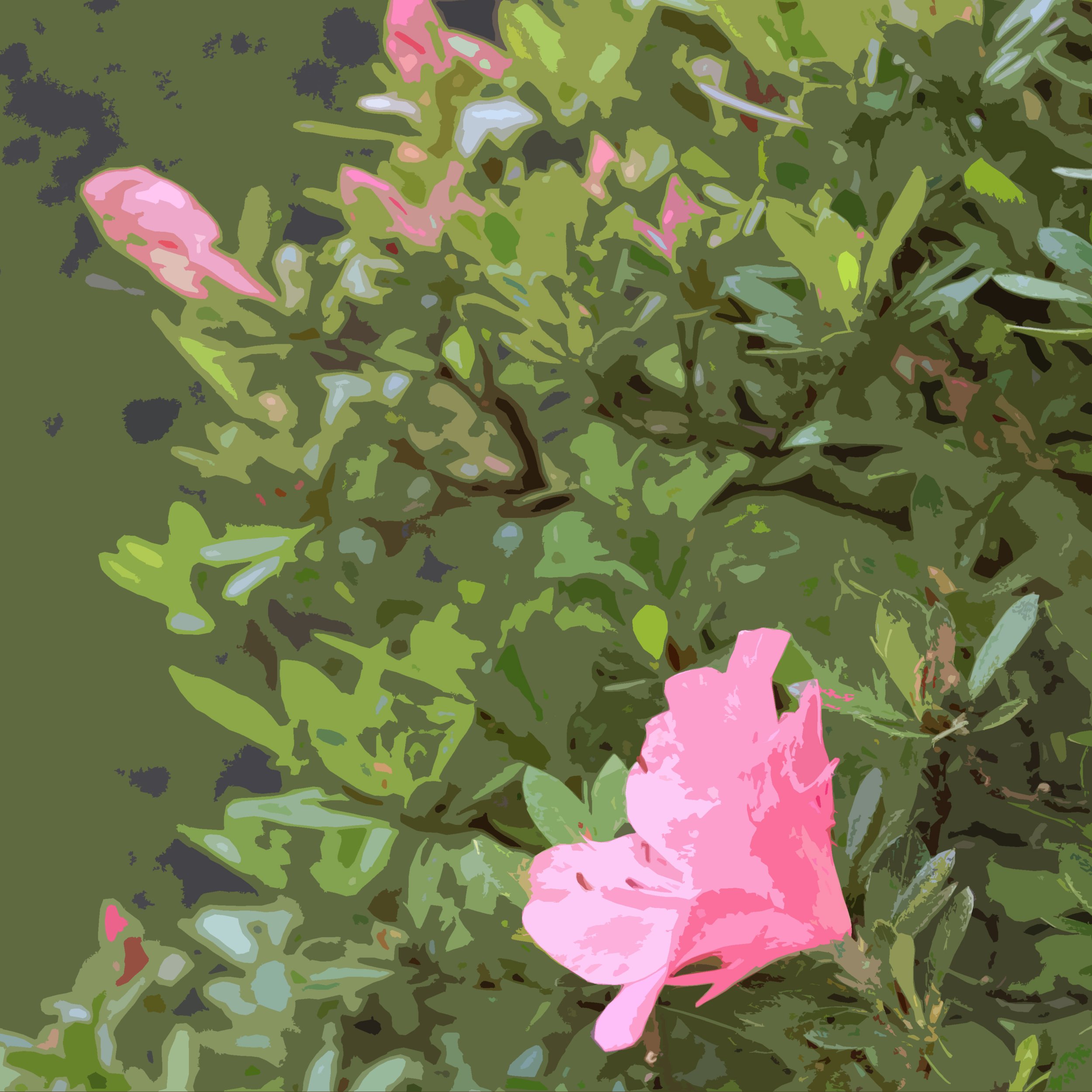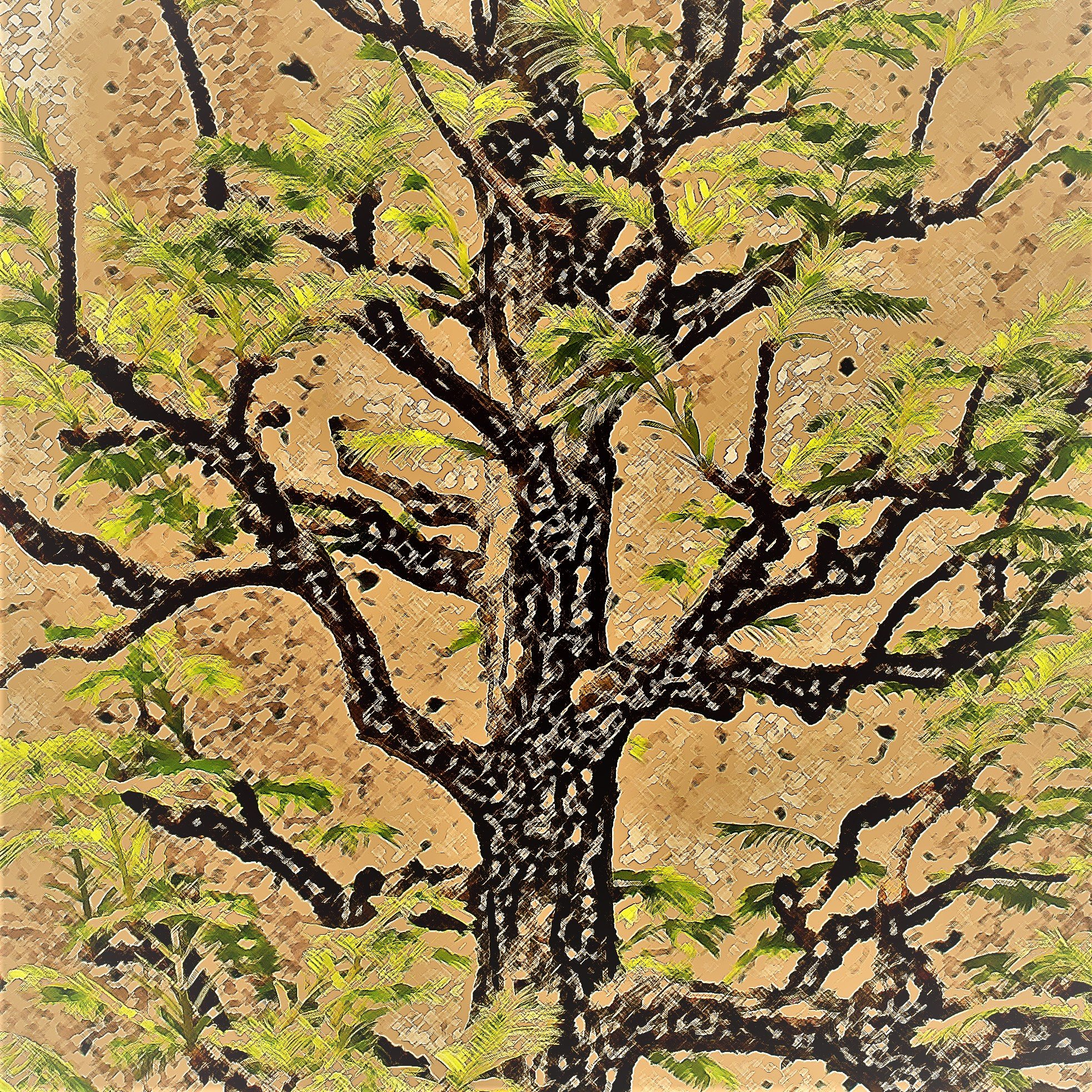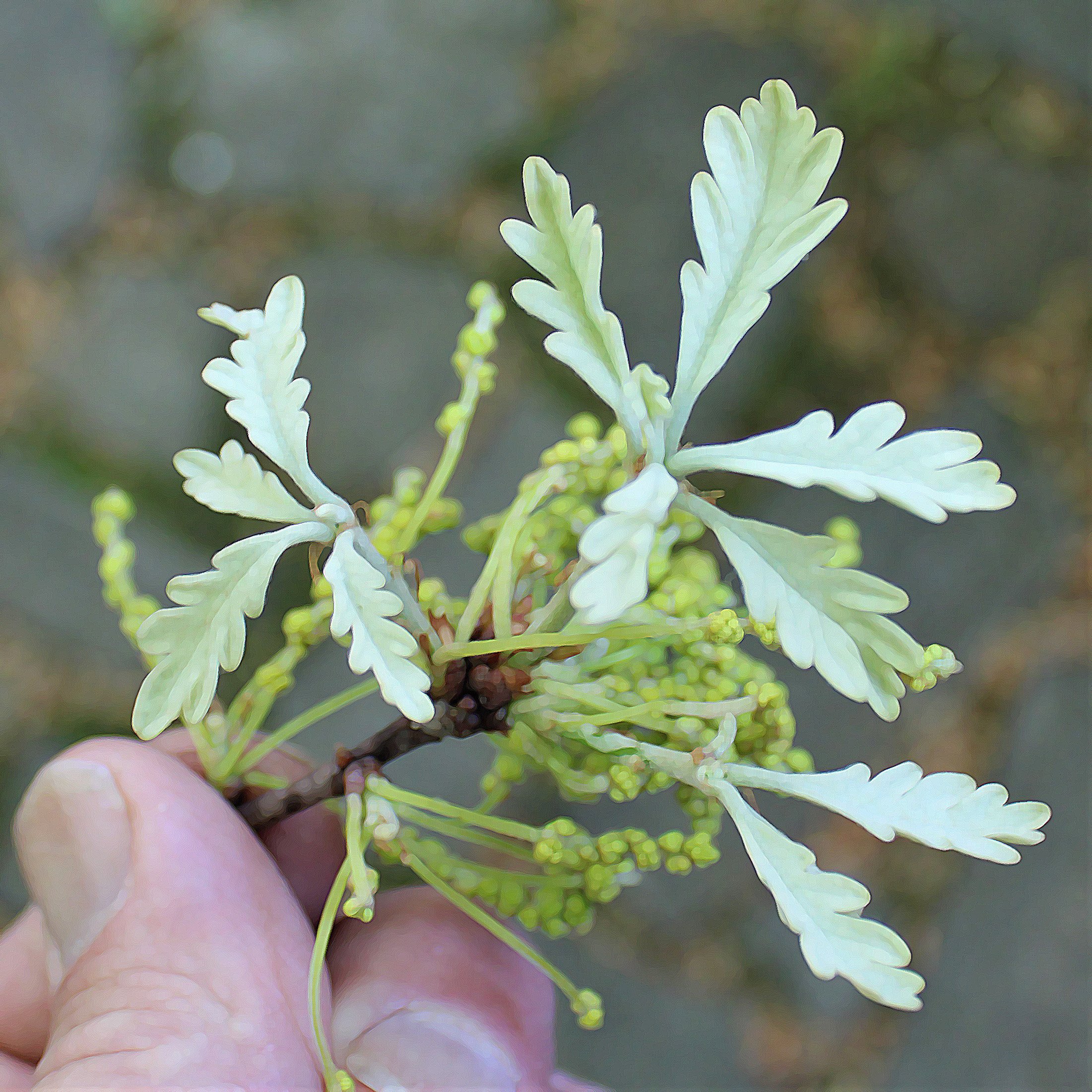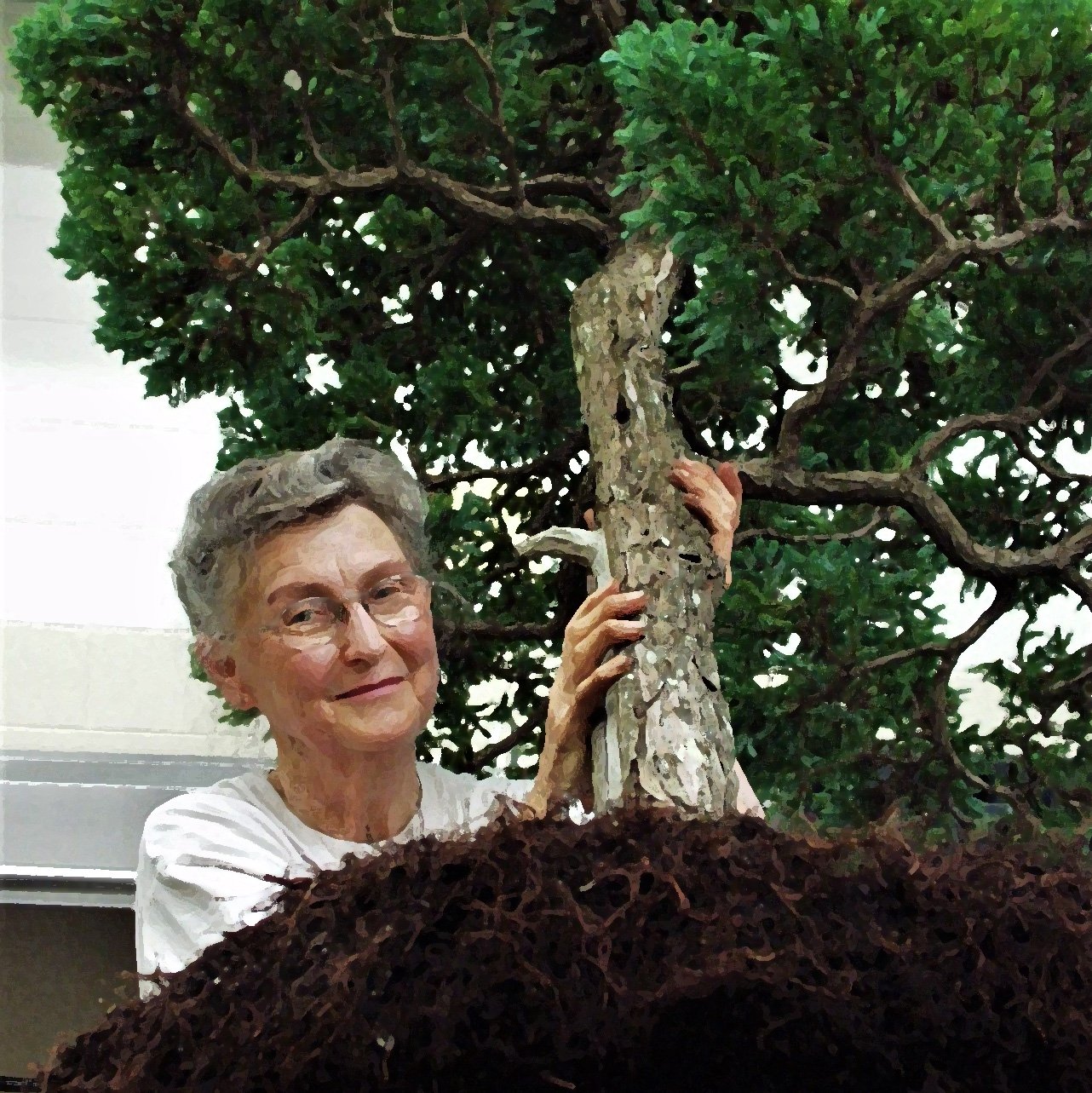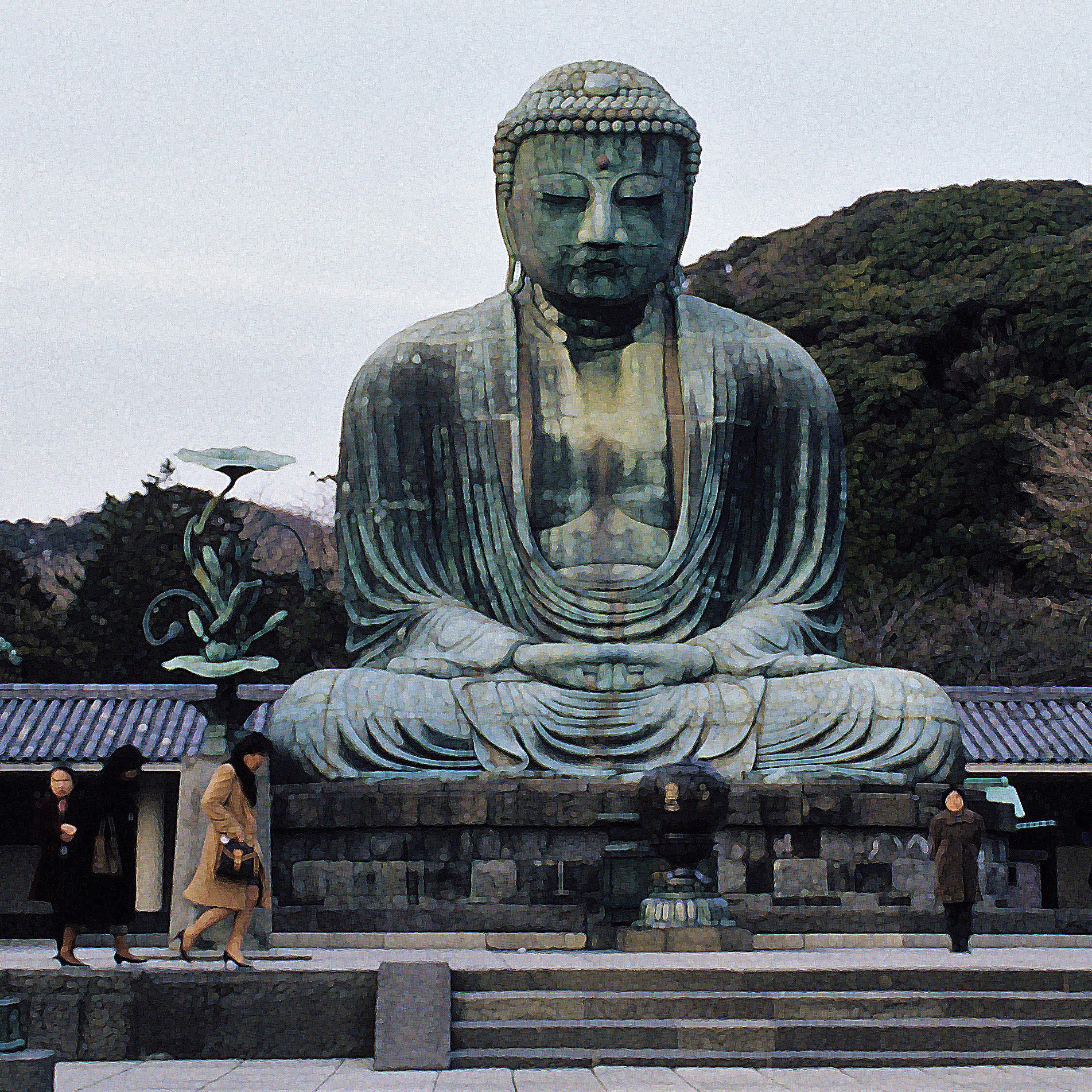In the four years since the demonstration that brought them together, the beech and hemlock did well and both attained an agreeable degree of ramification in their branching. It is worth pointing out that even if a person is persnickety about larger sized leaves on deciduous bonsai trees, half the year there is no problem at all. American beech has distinctive leaf buds, too, so the winter look of this planting was particularly pleasing to me.
Read MoreFaith is required, along with a bit of imagination, to see past the moment and focus on an outcome that is perhaps years away. That visionary aspect of bonsai design was another of Mr. Yoshimura's strengths. I should add that my decision to take a chance and try for something different, to be creative and innovative in my thinking, was also a product of Mr. Yoshimura's influence. Those were traits he stressed to me when I studied with him. I was paying attention.
Read MoreEven without the little trees, the jewels at the heart of the garden’s identity, the place enchants. People slow down as they walk through, they speak more softly and look more carefully. The bonsai garden is not large but there is much to see in the layers of detail contained within. The second stage of spring in the bonsai garden begins on the second Saturday in May — World Bonsai Day — when the bonsai are returned to their benches and the garden is made whole.
Read MoreThe drive between Butner and Asheville took nearly five hours each way and the two journeys there and back were done as day trips, only a few days apart. We really had to pack the trucks to make everything fit in two trips, but amazingly we hauled everything without doing any damage. I had plenty of time on the long drive to think about how these desperate little trees would impact my life, but honestly, I don't remember what went through my mind.
Read MoreWhatever their appearance and however they may be judged aesthetically, bonsai of this sort have the essence of some greater identity due to particular circumstances. This something extra may be a remarkable story involving the individual bonsai itself, or, as is the case with our dawn redwood (Metasequoia glyptostroboides), the added interest may pertain to the species of plant from which the bonsai is made.
Read MoreThis homegrown bonsai specimen stands out in autumn with foliage the color of a fire truck, a feature attributable to the tree's genetic inheritance as a red maple. It is large, standing just under thirty-inches in height, with a diameter of eight-inches just above the surface roots. That is big for a bonsai but small for a mature red maple, a consequence of the environmental impact of being cultivated as a bonsai.
Read MoreIn the case of this dwarf white pine, I decided it was not worth undoing what had been accomplished because I could not think of a better tree to make out of what already existed. If this bonsai were a maple or hornbeam, it could be pruned back hard to nothing much more than a trunk and a new design could be constructed from the resulting regrowth. Pines are different.
Read MoreWhen the Arboretum accepted the unsolicited donation of a bonsai collection and I was offered the job of caring for the little trees, I tried to turn down the assignment. I was happy doing what I was doing at the time, which was most often manual labor out on the Arboretum property. We were outside most of the time, working on our own with more than four hundred wooded acres to keep us busy, and we rarely saw anyone else all day.
Read MoreWhat do you want to be when you grow up? That is a standard question older people feel obliged to ask the young, or so it was when I was younger and I suspect the question is still out there. The older person who asks the question is only making conversation, trying to find out a little bit about you and what you are interested in.
Read MoreWhen a painter puts the last stroke of the brush to the canvas, very rarely does anyone follow behind and paint over the work. The same is true for a work of sculpture, or a piece of writing. So when we say, "This is an O'Keeffe painting" or "This is a Calder mobile" or "This is a Hemingway novel," we are talking about a piece of work done by a single person. They may well have been influenced by others, but the finished piece is their original work and it stays the way they made it.
Read MoreThe American hornbeam had previously been part of a different Arboretum landscape planting, but was removed because it had a more noticeably crooked trunk than the other trees with which it had been planted. The rejected hornbeam was in a storage area for several years when I noticed it and asked about its availability. The same crooked trunk that was previously seen as a flaw made the tree attractive for its new assignment.
Read MoreThe Curator’s Journal began publishing the last Friday in March, 2022. That means this week's entry brings us around full circle and we now officially close out the first year of the course. Here at the juncture where one year ends and another is about to begin, it seems opportune to pause a moment and take in the scenery, looking back at where we've been and surveying what might be ahead.
Read MoreThe idea of identifying what is most appealing about a tree and making that feature more prominent through presentation is elemental to good bonsai design. Other teachers have taught this, but I learned it that day from Mr. Yoshimura, on this juniper specimen.
Read MoreIt's the detail work, the non-glamorous, time-consuming, tediously repetitive labor done with tools like tweezers and a dental pick, that really elevates the quality of a bonsai and makes it shine. Virginia went about her business with a seriousness of purpose and unremitting focus that belied any suggestion the work was menial.
Read MoreIn 2018, eighteen years after being received in donation, I decided the time had come for this specimen to have its public debut and it was chosen to be the logo tree for the twenty-third Carolina Bonsai Expo. The unintended effect of the dangling branch revealed itself when I was making the Expo logo image. Suddenly what I saw before me took on a certain shape so clearly visible that once seen I couldn't un-see it. It was the image of a rearing horse.
Read MoreNaming March in honor of a mythological being who embodied both growth and devastation is entirely appropriate. This month may see the first tender young sprouts of green life emerging from fertile soil, but it may also see those same sprouts freeze and turn into dark brown slime a few days later. March is fickle. What's behind the door — the lamb or the lion?
Read MoreNow, twenty-five years later and with the advantage of hindsight, there are certain elements of my Japan experience that I recognize as having had more importance than previously acknowledged. It is time to shine some light on these matters.
Read MoreFrom Ryoanji we walk another fifteen or twenty minutes to Kinkakuji Temple, another truly outstanding site. The gardens are beautiful, but the real highlight is a golden temple, three stories high, sitting above a large pond that reflects the image. It's fantastic, dreamlike. I shoot a million pictures, but it's unlikely that I capture on film the shock of seeing such an amazingly wondrous thing for the first time.
Read More
